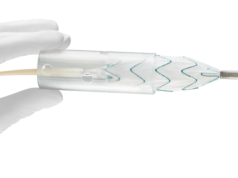
Terumo Aortic has announced completion of enrolment of the RelayPro traumatic injury (RelayPro-T) investigational device exemption (IDE) study in the USA. RelayPro is a low-profile thoracic stent graft device designed to expand the treatment of thoracic endovascular aortic repair (TEVAR) to patients with smaller access vessels.
The RelayPro-T study has successfully enrolled a total of 50 patients with traumatic injury of the descending thoracic aorta at 16 sites across the USA.
The purpose of this prospective, multicentre, non-blinded, non-randomised study is to analyse endovascular repair of traumatic aortic injury, or transection, usually caused by high speed impacts such as those in road traffic accidents or serious falls. The primary endpoint of the trial is all-cause mortality at 30 days with follow-up continuing for five years.
Co-national principal investigator, Benjamin W Starnes (University of Washington, Seattle, USA), commented: “This is an important landmark in moving this device along the regulatory pathway and making it available to surgeons throughout the USA to treat these emergency cases. The Relay device has already shown outstanding navigability, total accuracy, and less risk of air embolism thanks to its unique dual sheath design. In addition, the low profile of the RelayPro device will make it suitable for more patients.”
Furthermore, co-national principal investigator, Ravi Rajani (Emory University School of Medicine and Grady Memorial Hospital, Atlanta, USA), added: “The endovascular management of traumatic aortic injury has the potential advantages of less morbidity due to smaller incisions as well as shorter operating times. A device that can further improve on these advantages with a lower profile and a more flexible delivery system will be a welcome addition to our treatment options. Greater spacing between stent zones makes it more conformable to the aortic wall, even in the highly angled aortic arch of the typically young trauma patient.”













